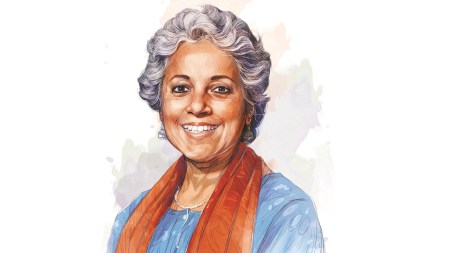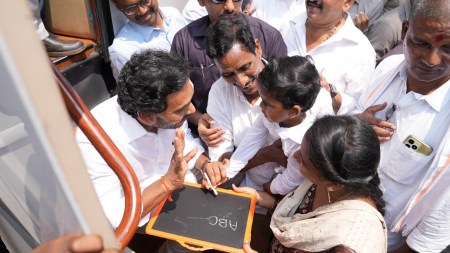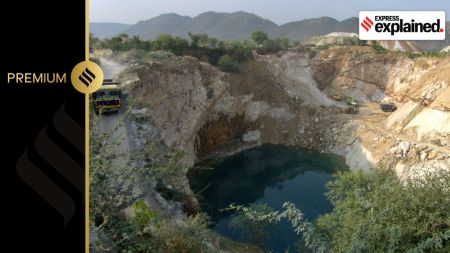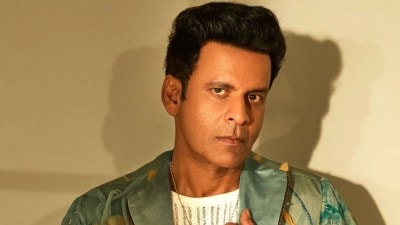- India
- International
Expert Explains: How a ‘new’ Japan promises to transform Asian geopolitics
Japan has given up its post-War pacifism and is working to become a major military power. The turn is historic, and promises to transform the geopolitics of Asia and the world. A politically resolute and militarily strong Japan contributes to India’s objective of building a multipolar Asia in a multipolar world.
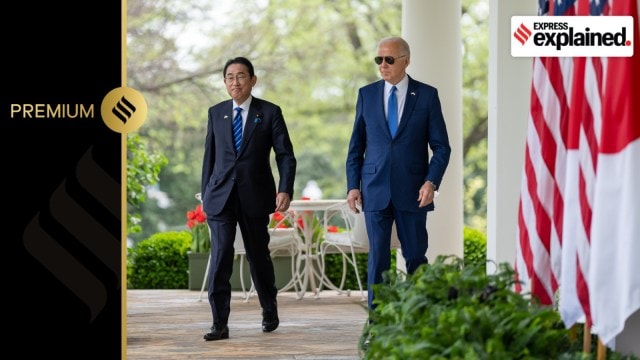 President Biden and Prime Minister Kishida at the White House. (Via X.com)
President Biden and Prime Minister Kishida at the White House. (Via X.com)Japan’s Prime Minister Fumio Kishida’s address to the United States Congress earlier this month, and the developments from his summit meeting with President Joe Biden, announced the arrival of a new, assertive Japan to the world. Japan is changing — and why this matters.
What is the change that Japan is undergoing?
After World War II, a defeated and chastened Japan adopted a policy of pacifism — it avoided building significant armed capability, limited its defence expenditure, and refused to participate in military conflicts anywhere. This pacifism was rooted in Japan’s determination to expiate its militarism and imperialism in the pre-War decades.
Japan’s pacifism was compensated by its bilateral military alliance with the United States. Being a protectorate of the US in Asia, Japan was free to focus its energies on rebuilding its economy and becoming a commercial and technological powerhouse by the late 1960s. By the turn of the 1970s, Japan became the world’s second largest economy, behind only the US.
Today, Japan is set to become a major military power, transform its famed civilian industrial capability into a military industrial complex, and turn from being a US protectorate into an American partner and a significant contributor to Asian and Indo-Pacific security.
This is the second Japanese transition over the last decade.

In the mid 2000s, Japan began to articulate ideas for a new security architecture in Asia. Take for instance the concept of the Indo-Pacific, the single most important geopolitical idea of the 21st century. The late Prime Minister Shinzo Abe first spoke about the strategic unity of the two oceans (Indian and Pacific) during his visit to India in 2007. Since then, Japan has invested enormous diplomatic, political, and financial resources to popularise this geopolitical construct that was eventually adopted by Australia, Indonesia, India, and the United States.
In the second transition unfolding today, Japan is matching its strategic ideas with military resources and the political will to actively reshape the regional security order. Kishida’s visit to Washington DC was in effect the unveiling of a new geopolitical Japan.
What is the reason for this radical change?
The US has long pressed Japan to take a more active security role in Asia. But Japan, comfortable with its commercial focus, has been unwilling. A mix of external and internal factors have contributed to its reorientation in the 21st century.
On the external front, four elements have come together: the rise of China and its military assertion, especially on the territorial disputes with Japan; the deepening military bonds between Beijing and Moscow and the coordination of their policies in North East Asia; the growing military capabilities of North Korea; and the fears triggered by the Trump Administration that the US could withdraw its security protection to Japan and other Asian allies. Together, these factors have profoundly altered Japan’s regional security environment, and demanded fresh thinking.
Internally, this situation strengthened conservatives in Tokyo, who wanted to see Japan becoming a ‘normal power’. They argued that Japan has done enough to prove its credentials as a responsible citizen of world affairs, and the time has come for it to take responsibility for its own security, and to contribute to the regional order.
What exactly is Japan doing to become a geopolitical power?
First, Japan has done away with the historical cap on defence expenditure, unofficially at 1% of its GDP. According to data from the World Bank, in 2020, Japan’s military expenditure touched 1% of GDP for the first time in six decades. In 2022, it touched 1.1%. Kishida’s government has pledged to double annual defence spending to around 10 trillion yen ($68 billion) by 2027, which would make Japan the world’s third-biggest military spender after the US and China.
Second, Japan has acquired, and is in the process of further acquiring, its own counter-strike capability in the form of cruise missiles. In January, it signed a deal with the US to purchase up to 400 Tomahawk cruise missiles, capable of striking deep into China and North Korea. From relying entirely on the US to building up its own deterrent capabilities is a major shift.
Third, late last year, Japan’s cabinet eased its self-imposed ban on exports of lethal weapons to friendly countries. This has paved the way for the leveraging of Japan’s immense manufacturing and technological base to aid its allies at a time when their own production capacities cannot keep up with the likes of China and Russia.
For instance, immediately after the easing of the export ban, Japan approved a shipment of Japanese-made Patriot missiles to the US. Along with the United Kingdom and Italy, Japan is leading the Global Combat Air Programme, a multinational initiative to develop the BAE Systems Tempest, a proposed sixth-generation stealth fighter. During Kishida’s visit, Japan and the US finalised the creation of a joint military industrial council to facilitate the co-production of weapons.
Fourth, Japan and the US are in the process of revising the command-and-control framework governing their defence forces, with plans to eventually significantly integrate the command structure. Currently, the US operates military bases in mainland Japan and Okinawa island, but its command structure is in Hawai’i, the headquarters of the US Indo-Pacific Command. A joint operations command will be set up in Japan going forward.
Have there been changes in Japan’s diplomatic posture?
First, Japan has made attempts to end disputes with South Korea, inherited from Imperial Japan’s occupation of the Korean peninsula from 1910 to 1945. The reconciliation has facilitated greater regional security coordination, and has helped the US move from a system of bilateral alliances in Asia to a regional security network, in which US allies work with each other.
Second, Japan has been one of Ukraine’s strongest supporters in the war with Russia. It has offered Ukraine a lot of aid for reconstruction, and has sent some weapons as well. Japan has been alone in Asia to make a clear case for defending Ukraine’s territorial sovereignty. Kishida has often said that “Ukraine could be the future of Asia” if the principle of respecting territorial sovereignty is not defended in Europe.
In his address to Congress, the Japanese leader almost chastised Republicans for their reluctance to extend more support to Ukraine. “…I detect an undercurrent of self-doubt among some Americans about what your role in the world should be,” Kishida told Congress. “Ukraine of today may be East Asia of tomorrow… Japan will continue to stand with Ukraine,” he said.
It was a powerful statement, signalling Japan’s willingness to weigh in on the US domestic debate on Ukraine, and to encourage Republicans in Congress to rethink their opposition to sending more military assistance to Kyiv.
What are the implications of this ‘new’ Japan? Will the push last?
Japan was among the most powerful countries in World War II, with a fearsome military that marched all the way to India’s border. After decades of pacifism, a politically active and militarily more capable Japan will inevitably rearrange the regional security calculus.
Despite the widespread fear that the policies outlined by Kishida, whose political stature has been in decline at home, may not last, structural factors are likely to ensure broad continuity in Japan’s new orientation. The potential return of Donald Trump to the White House is also intensifying the effort in Tokyo to insure against an American turn towards isolationism.
How has India reacted to this change in Japanese policy?
New Delhi has not issued a formal reaction to the recent changes in Japan’s policy. But India has no quarrels with Japan’s historical role in Asia. Many in the Indian national movement, including Subhas Chandra Bose, turned to Imperial Japan for support in the war for independence from Great Britain. In the early years of independence, Prime Minister Jawaharlal Nehru insisted that both China and Japan must play their rightful role in shaping the future of post-war Asia.
India’s bilateral relationship with Japan has acquired a political character over the last two decades. But the potential for military cooperation between the two countries remains unrealised, and there is scope for New Delhi and Tokyo to discuss military-industrial collaboration.
At the end of the day, a politically resolute and militarily strong Japan that can build a stable Asian equilibrium is a positive development from the Indian perspective. It contributes to India’s objective of building a multipolar Asia in a multipolar world.
C Raja Mohan is a Contributing Editor for The Indian Express and a visiting professor at the Institute of South Asian Studies, National University of Singapore. He spoke to Arjun Sengupta.
More Explained
EXPRESS OPINION
May 21: Latest News
- 01
- 02
- 03
- 04
- 05



